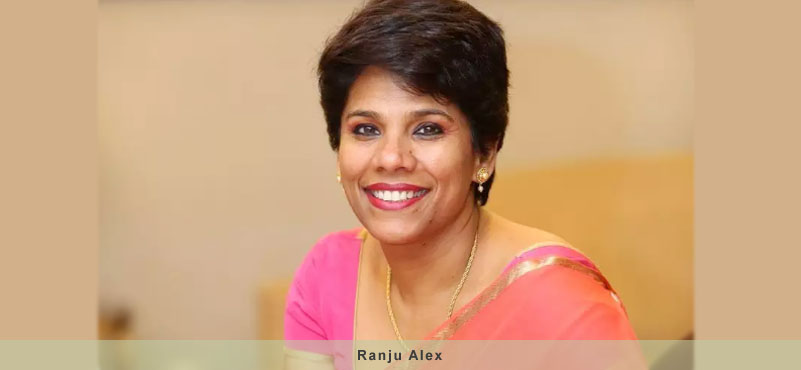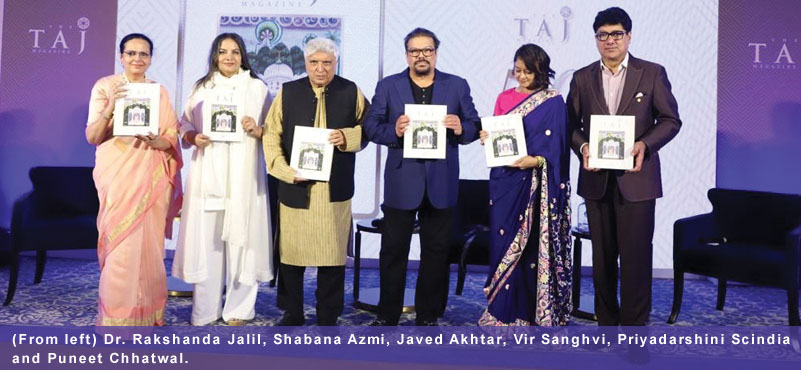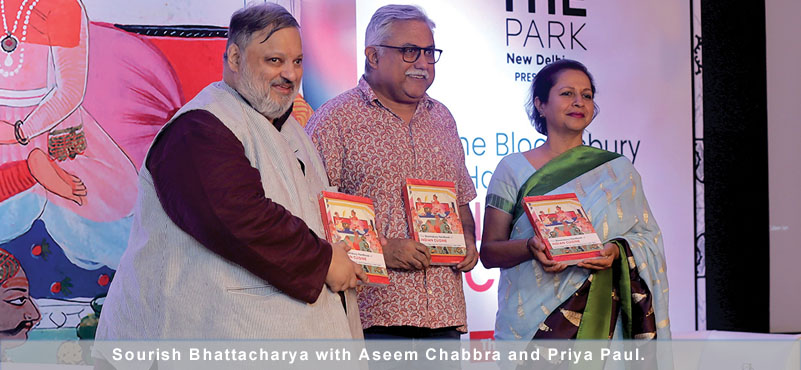This year-end report is an analysis of the Indian Hotel market performance for 2022 which is based on data sourced from STR.
2022 was a super year. Several records were made and broken; budgets achieved mid financial year. In the context of the last 14 years, and particularly the last 2 years, one could be excused for terming this as a ‘dream year’. This came through a 2022 review by the consultancy company Horwath HTL, specialising in hotels, tourism and leisure industry. Here is a brief snapshot of the report.
65% of respondents to a survey conducted by Horwath HTL (HHTL) say it was their best year ever; another 30% ranked it as among the 3 best years ever for their hotel. The higher rates earned in 2022 are actually such as should normally be attached to the quality of several of our hotels and resorts. In that sense, we have earned what is our rightful due, a set of returns that we richly deserve.
Leisure has become serious business; weddings even more celebratory; get-togethers and re-unions more urgent in the wake of the mental scars of the pandemic. Sports is the new contributor. Hotels and resorts have responded with enhanced value propositions, better packaging, delivery, and earnings. Importantly, hotels and resorts are no longer apologetic about charging commensurately for the facilities and services they deliver. Each of these demand generators have long legs, unfortunately often running in competitive tandem rather than in relay. The overlap means that low season gaps are still a concern; on the positive side, the overlap will support more hotels. And the core of business travel has yet to fully re-ignite post pandemic, with cross-border travel remaining relatively muted and scattered in 2022.
IT centric markets (BLR, Chennai, Hyderabad, Gurugram and Pune) were constrained by inconsistent demand numbers and profile. All India ADR grew nearly 38% over 2021, and crossed Rs. 6,000 after 10 years; however, all India occupancy remained shy of 60%, and 4-6 pts below the occupancy for 2016-2019. All-India occupancy at 59.8% needs clarification. Sourced from STR, the underlying data includes a large supply base from aggregator platform hotels and therefore shows the wider picture across hotel use options, including the numerous independent hotels mainly serving the M-E segment via use of aggregator platforms. As HHTL supply data for chain-affiliated hotels does not include independent hotels on aggregator platforms, HHTL has separately estimated 2022 occupancy and ADR for chainaffiliated supply (excluding hotels on aggregator platforms) – such occupancy and ADR are estimated at nearly 63% and Rs. 6,229 respectively.
Indicators from achieved performance, provide several insights particularly on aspects with medium and longterm implications.
1. Hotels have achieved re-rating of their products in the eye of the market. The inherent rate willingness of guests is sizeably higher than previously, with the extent of increase dependent upon product, experience, and location. This does not mean that current rate structures will prevail at all times – premiums derived will drop if market conditions are less conducive. However, the allocation of the rate increases between an inherent rate component and a premium charge has changed, with the former having risen materially. The re-rating of this inherent component will stand in good stead for the future.
2. Leisure is now clearly a business, and not a side investment. Leisure destination ADR’s are so much higher than the main business cities – Udaipur at Rs. 14k leads the pack, Goa comes second at Rs. 9.8k, with Himachal Pradesh, Mumbai and Uttarakhand taking the next 3 places at between Rs. 8.8k to Rs. 8.2k. RevPAR comparison is unfair because leisure destinations suffer much greater seasonality than business cities. Yet, its Udaipur, Goa and Mumbai as the top three – in that order. In fact, Udaipur RevPAR is higher than the ADR of all metro cities other than Mumbai. Some luxury resort ADR’s in Rajasthan are starting to approach the USD 1,000 mark for peak months. The top 10 owners of chain-affiliated hotels, other than hotel chains themselves, have about 20,700 hotel rooms of which only 4.6% (950 rooms) are in leisure destinations; one more independent hotel of about 75 rooms is also a leisure property. India Hotel Market Review 2022 www.horwathhtl.com 3 Scattered ownership has led to diverse development and quality, but also growth in multiple destinations – however, scale will be valuable going forward. The only caveat the industry should adopt, as its responsibility, is to not accept hotels that are damaging of the eco-system in any destination.
3. High demand and rates in cities such as Mumbai and Delhi are pushing hotels to seek a reduction in crew rooms. The rate gaps are far too big to sacrifice. Customary thinking would caution against this, as the hedge of secure occupancy is lost; but the present age is not deep on loyalty and an element of rationalisation of crew inventory would definitely be prudent. Growing airline activity would mean a gradual increase in overall crew room needs in the future thereby providing some element of demand in future should crew based core occupancy become advisable.
4. The domestic sector has again delivered substantially and with depth of pocket. As inbound business, leisure and MICE travel returns to a greater extent than in 2022, the portents for 2023 are very positive. This is causing city hotels to be much higher priced than previously. A word of caution here for hotel managers – charge the price you have to, and deny the upgrades that you must but do not be abrasive about it; one hears statements of pride about guests coming on their knees for rooms, forgetting that it was the domestic sector that bailed us out just a few months ago. On the flip-side are the challenges being seen in the IT sector globally and its impact on the sector’s needs for travel and MICE. Besides, the Ukraine war has materially hit the diamond sector which would hurt travel and discretionary spend capacities emanating from that sector. Recession in western countries could also see a slower return to discretionary long-haul travel.
5. Five markets – Mumbai and Delhi among business cities, and Goa, Udaipur and Jaipur – have 26.8% supply share but delivered 37.3% of the room revenue earned in India in 2022. The impact of concentration would have been even greater but for the fact that the 4 other metro cities – Bengaluru (BLR), Chennai, Hyderabad and Kolkata – have 23.4% supply share but delivered a sub-par 21.5% of room revenue. Once these markets get back to a better normal (and some premiums), the all-India numbers would be brighter. These nine markets control half of India’s supply. However, the supply and business concentration is slowly diluting as regional markets expand. Supply share of markets outside the top 15 markets has increased from 27% in 2015 to 31% in 2019 and further to 34% in 2022. The top 15 markets include all metro and primary cities, Goa, Udaipur, Chandigarh and the wider NCR area. Pipeline data shows 57% of new supply through the next 5 years to be outside these top 15 markets.
6. Lack of Scale remains a serious concern. The average size of new supply created in 170 hotels in 2022 was 65 rooms. 93 of these hotels had 50 rooms or less. Just 2 hotels had more than 300 rooms; 2 others with large room count opened with partial inventory but will ultimately fall in the larger inventory category. While some lack of scale is inevitable in new regional markets, we see it to be more widespread than that. Domestic chains are working with these hotels and gaining spread – but how is this going to serve profitability and effective management at unit level and at chain level? Are all these smaller hotels truly brand compliant, even at the mid-positioning brand levels? Notably, of the 20 largest hotels opened in 2022 (including with partial inventory), just 5 are with domestic chains. Hyatt had 6, IHCL and Marriott had 4 each, Hilton 3, and one each from ITC, Accor and Radisson. The average inventory at these 20 hotels is 210 rooms. India Hotel Market Review 2022 www.horwathhtl.com 4
7. Weddings demand and spends rose massively. One cannot call it ‘revenge weddings’ but there clearly was a pace to make up for time lost in Covid; and there were big celebrations by those who had small / restricted weddings during Covid. City hotels, destination resorts, even modest hotels in semi-destinations did well. One may possibly see the flame of demand and spend slowdown as the backlog clears. However, demand for other social events is growing as well, and greater sections of the community are resorting to destination weddings – the segment will remain a strong revenue generator.
8. Corporate and institutional MICE remained soft through most of the year, although some hotels in Delhi indicated a good re-bound. Overall this segment should grow in 2023, in addition to the G20 related demand.
9. Sport is a segment by itself, and has enormous potential. Cricket, hockey, kabaddi, football are creating sizeable demand, across various price segments. Newer leagues are starting up, including for women. Mumbai benefitted materially from the IPL held mainly in that city in 2022; many cities should gain from IPL 2023. International events being held in India in 2023 (hockey and cricket world cups) will generate demand. ISL is creating hotel demand across many markets, including the north-east. The sports segment, other than men’s cricket, is in its infancy and will grow quite quickly – it should be nurtured.
10. Debt-stress appears to have disappeared for the moment, except those hotels that were patently stressed assets or have sought stress through erroneous motivation. However, the wearing down of ECLGS benefits, with the additional loans carrying full interest, will see the burden re-surface except for owners who have acted wisely (hopefully having earned some record numbers in the last year). In the back-drop of current performance trends, it will be impossible to seek special favour (not that we really get it either). So be prepared for some churn, some rerun of the valuation games, and some deals. Owners will do well to look at early-stage private deals than let the asset go into bankruptcy resolution, drag, and lose all equity value.
11. Franchising is gaining momentum, as is third party management. Some chains are built on franchising; some others starting in limited or significant pursuit. On the other hand, two large chains have pulled back on it and even reversed some associations due to the aspect of brand detriment. It will be interesting to see how this model works out in a market that is not yet mature, and has soft commitment to quality.
12. Soft brands are also gaining traction, enabling growth and spread through hotel conversions. Conceptual adherence, rather than brand purity, will be key to longer-term success as market opportunities arise. Smaller properties must be ‘net earnings contributors’ for generating longer term brand value.
13 Airport enhancement and the spread of regional airports is opening up new opportunities for business, and for drawing larger visitation. Mopa is a landmark for Goa. Pushkar and Ajmer have gained from Kishangarh airport; Jaisalmer, Varanasi and the Doon valley have gained from new / expanded airports; Hampi can gain from Hubli airport – these are just some examples. The government expects to have 220 operating airports by 2026, including the major new airports at Jewar and Navi Mumbai.
14. The return of strong business has removed the Covid period financial stresses on our workforce. But the workforce itself is an issue, as the sector faces heavy attrition and lack of attractiveness. This is a prime issue that could stunt growth, particularly as we add many small hotels.
15. Margins could be under some pressure as payroll costs (employee numbers and salaries / benefits), the cost of supplies and of doing business, are rising. Revenue increases will be an off-set but absolute costs will rise. Of 170 hotels surveyed by HHTL, 52% reflected lower growth potential on GOP as compared to growth in Revenue.
16. Hotels will be tempted to push off renovation and major repair efforts so as to encash the good time; it’s an understandable call but not always a good call as asset deterioration could become detrimental. The emergence and growth of serviced apartments in Brazil www.horwathhtl.com 5
17. The longer term will call for asset and appeal refresh. Hotels should consider strategies to remove the ‘sameness’ element that pervades across hotels in some heritage heavy markets, such as Rajasthan.
18. Looking Forward: • To a continued golden period, with pragmatism on the expectation of year-on-year growth particularly if your reporting period is April to March. • Newer markets and newer opportunities – Varanasi, Kevadiya, North-East, pilgrim centres, Uttar Pradesh, Navi Mumbai • Continued revival of manufacturing sector – this will widen the business travel demand base • Positivity in the IT sector • Inbound travel, across all purposes • Solid attention to sector education, training and employment attractiveness. Coverage & Classification In this report we examine Occupancy (Occ), Average Daily Rate (ADR) and Revenue per Available Room (RevPAR) trends nationally and for several Key markets. Hotels are classified as Luxury & Upper Upscale (LuxUpperUp), Upscale & Upper Midscale (Upscale-UpMid) or Midscale & Economy (M-E), consistent with STR classifications. Our analysis is based on supply, demand and revenue data represented as occupancy, ADR and RevPAR reported by hotels to STR and generated per STR guidelines. Inventory and pipeline related data referenced is based on Horwath HTL research. All values are in Indian Rupees. Previous year numbers may have undergone changes as newer participants in STR data contribute current and past data. The data includes aggregator owned hotels and hotels operated on aggregator platforms. Operating data for de-flagged hotels is included to the extent the hotels have continued participation with STR. We have concentrated upon all-India numbers and 15 key / main markets, which carry about 66% of total chain-owned / managed / affiliated inventory.
ABOUT HORWATH HTL
 Horwath HTL, a consulting company specialising in hotels, tourism and leisure industry, is avidly followed by India’s hospitality industry.
Horwath HTL, a consulting company specialising in hotels, tourism and leisure industry, is avidly followed by India’s hospitality industry.




































